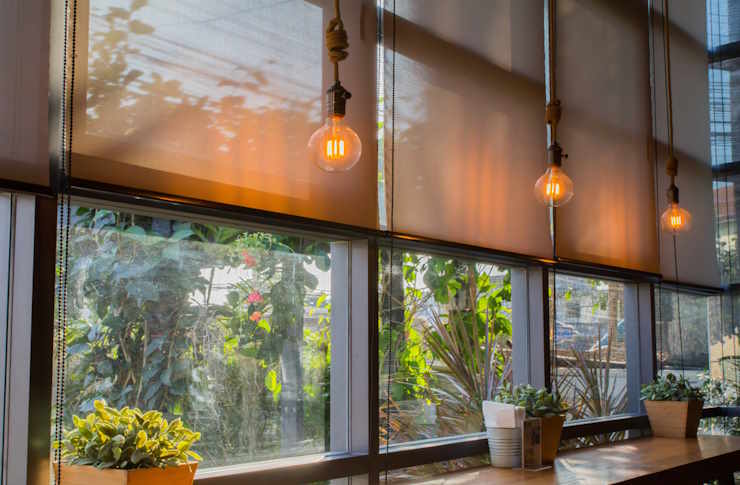Sculptural Lighting: Illuminating Art in Everyday Spaces
In the realm of interior design, a captivating trend is emerging that marries form and function in the most mesmerizing way. Sculptural lighting, once reserved for high-end galleries and avant-garde installations, is now finding its way into homes, transforming living spaces into dynamic galleries of light and shadow. This innovative approach to illumination goes beyond mere practicality, elevating lighting fixtures to the status of functional art pieces that command attention and spark conversation.

The Evolution of Lighting as Art
The concept of lighting as an art form isn’t entirely new, but its recent surge in popularity marks a significant shift in interior design philosophy. Historically, lighting fixtures were primarily utilitarian, with ornate chandeliers being the exception reserved for grand spaces. The Modernist movement of the early 20th century began to challenge this notion, with designers like Isamu Noguchi creating lamps that were as much about form as they were about function.
As design sensibilities evolved, so did the appreciation for lighting that could stand alone as a visual element. The 1960s and 70s saw experimentation with unconventional materials and shapes, paving the way for today’s more daring and expressive designs. Now, in an era where the boundaries between art and design are increasingly blurred, sculptural lighting has found its moment to shine, quite literally.
Crafting Ambiance Through Form
One of the most compelling aspects of sculptural lighting is its ability to dramatically alter the ambiance of a space. Unlike traditional lighting fixtures that often recede into the background, these pieces demand attention and interact with their surroundings in dynamic ways. A large, organically shaped pendant light can create a sense of movement in an otherwise static room, while a cluster of geometrically inspired sconces can add rhythm and pattern to a bare wall.
Designers are exploring a wide range of materials in their creations, from polished metals and blown glass to recycled plastics and natural fibers. This diversity allows for an incredible range of effects, from the warm, diffused glow of a paper lantern-inspired piece to the sharp, precise beams cast by a metallic, angular fixture. The interplay of light and shadow becomes an integral part of the design, with some pieces creating mesmerizing patterns that shift throughout the day.
Integration with Smart Home Technology
As sculptural lighting gains traction, it’s also embracing the technological advancements of the smart home era. Many of these artistic pieces now come equipped with features that allow users to adjust not only the intensity of the light but also its color temperature and even its shape. Imagine a cloud-like fixture that can shift from a cool, energizing daylight hue in the morning to a warm, relaxing amber in the evening, all controlled via a smartphone app or voice command.
This marriage of art and technology opens up new possibilities for personalization and interactivity. Some sculptural lights are designed to respond to music or ambient sounds, creating a visual representation of audio in real-time. Others can be programmed to change their appearance based on the time of day or even the weather outside, blurring the lines between indoor and outdoor environments.
Sustainability Meets Artistry
In line with growing environmental consciousness, many designers of sculptural lighting are incorporating sustainable practices and materials into their work. This eco-friendly approach not only appeals to environmentally minded consumers but also adds an extra layer of meaning to these artistic pieces. Recycled materials, energy-efficient LED technology, and locally sourced components are becoming increasingly common in the world of sculptural lighting.
Some designers are taking the concept of sustainability even further by creating biodegradable or easily recyclable fixtures. These pieces challenge the notion of permanence in art and design, suggesting that even our most cherished decorative elements can be part of a circular economy. This approach resonates with a growing segment of consumers who are looking for ways to express their style while minimizing their environmental impact.
Incorporating Sculptural Lighting in Home Design
For homeowners and interior designers alike, the rise of sculptural lighting presents both exciting opportunities and unique challenges. These statement pieces often require careful consideration of scale, placement, and overall room design to achieve the desired effect. A large, elaborate fixture might overwhelm a small space, while a more subtle piece could get lost in a grand room.
The key to successfully incorporating sculptural lighting lies in finding the right balance between the fixture and its surroundings. In some cases, the lighting piece might serve as the room’s centerpiece, with other elements chosen to complement and support it. In other instances, it might be part of a larger artistic composition, working in harmony with other design elements to create a cohesive aesthetic.
As sculptural lighting continues to evolve and captivate design enthusiasts, it’s clear that this trend is more than just a passing fad. It represents a fundamental shift in how we think about lighting in our homes, elevating it from a purely functional element to an integral part of our living art. Whether it’s a dramatic centerpiece in a living room or a subtle, glowing sculpture in a bedroom, these pieces invite us to see our spaces in a new light, quite literally illuminating the art of everyday living.





